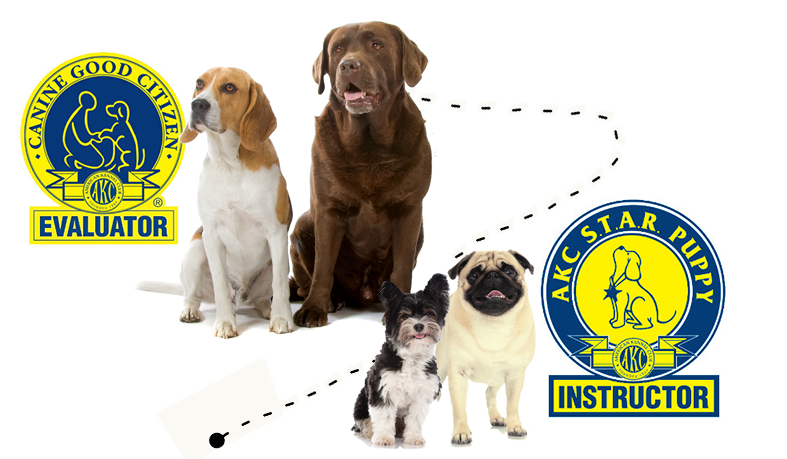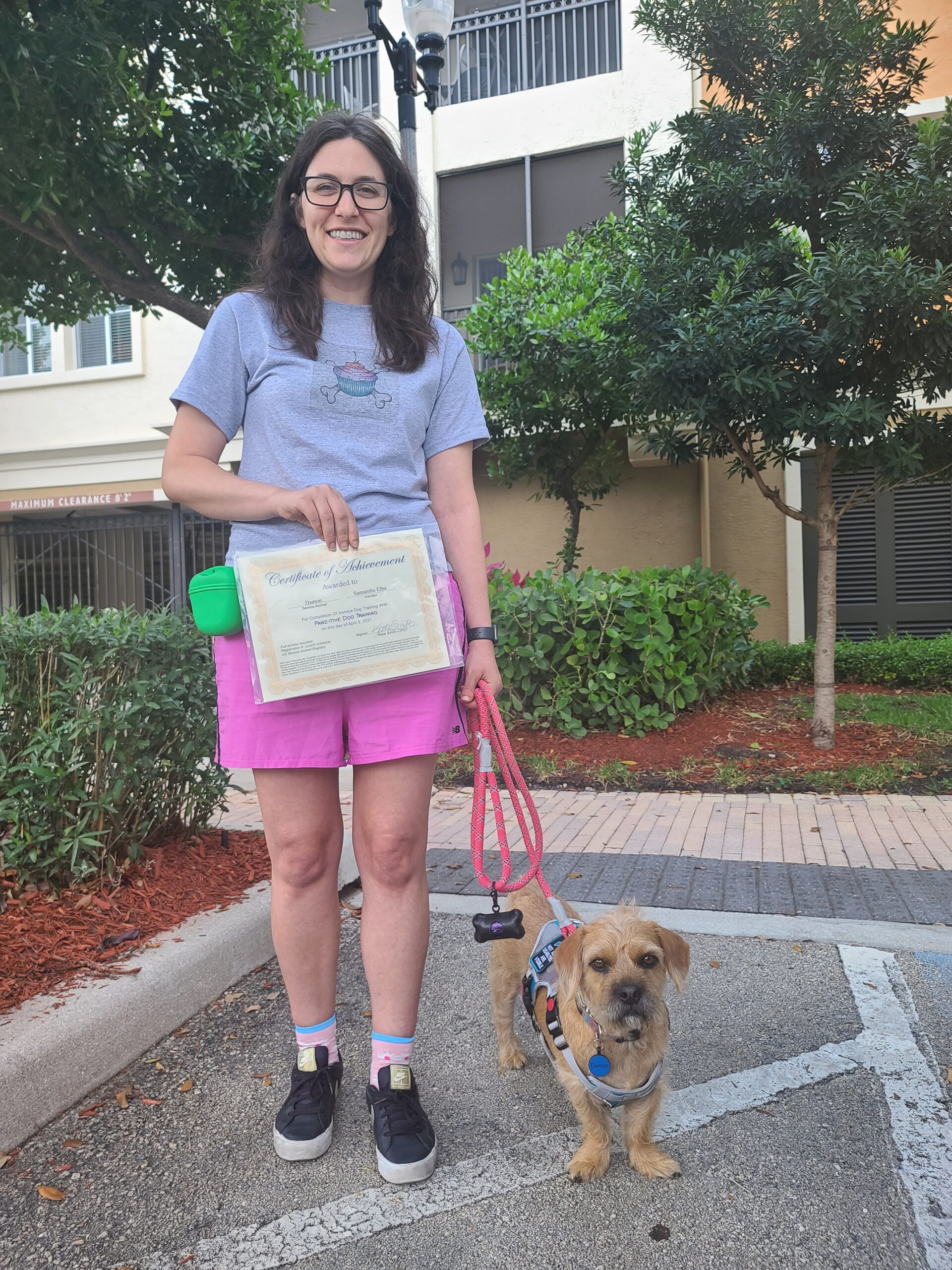CGC Testing


American Kennel Club Certifications
If your dog already knows these commands and you are just interested in completing the test and receiving the certification from the AKC it’s $40.00 plus tax per test. 9/10 dogs pass the first time!
As long as your dog has previous training with you and knows all these commands and you practice before you should be able to pass with flying colors.
However, if you want to take the test in the future and need help to get there book a session in either program depending on how old your dog is, PUPPY BASICS or ADULT TRAINING.
For more information on the AKC visit, https://www.akc.org/products-services/training-programs/canine-good-citizen/
Test Items Break Down
Meeting a Friendly Stranger
This test demonstrates that the dog will allow a friendly stranger to approach it and speak to the handler in a natural, everyday situation. The Evaluator and handler shake hands and exchange pleasantries. The dog must show no sign of resentment or shyness and must not break position or try to go to the Evaluator.
2. Sitting Politely for Petting
This test demonstrates that the dog will allow a friendly stranger to touch it while out with its handler. The dog should sit at the handler’s side as the Evaluator approaches and begins to pet the dog on the head and body only. The dog may stand in place to accept petting. The dog must not show shyness or resentment.
3. Appearance and Grooming
This practical test demonstrates that the dog will welcome being groomed and examined and will permit a stranger, such as a veterinarian, groomer or friend of the owner, to do so. It also demonstrates the owner’s care, concern and sense of responsibility. The Evaluator inspects the dog, then combs or brushes the dog and lightly examines the ears, and each front foot.
4. Out for a Walk on a Loose Leash
This test demonstrates that the handler is in control of the dog. The dog can be on either side of the handler, whichever the handler prefers. There must be a left turn, a right turn and an about turn with at least one stop in between and another at the end. The dog need not be perfectly aligned with the handler and need not sit when the handler stops.
5. Sit and Down
This test demonstrates that the dog has training, will respond to the handler’s command to sit and down and will remain in the place commanded by the handler (sit or down, whichever the handler prefers). The handler may take a reasonable amount on time and use more than one command to make the dog sit and then down. When instructed by the Evaluator, the handler tells the dog to stay and walks forward the length of a 20-foot line. The dog must remain in place but may change position.
6. Come and Stay
This test demonstrates that the dog will come when called by the handler. The handler will walk 10 feet from the dog, turn to face the dog and call the dog. The handler may use encouragement to get the dog to come. Handlers may choose to tell the dog to “stay” or “wait” or they may simply walk away, giving no instructions to the dog as the Evaluator provides mild distraction (ex. petting).
7. Reaction to Another Dog
This test demonstrates that the dog can behave politely around other dogs. Two handlers and their dogs approach each other from a distance of about 10 yards, stop, shake hands and exchange pleansantries and continue on for about 5 yards. The dogs should show no more than a casual interest in each other.
8. Walking Through a Crowd
This test demonstrates that the dog can move about politely in pedestrian traffic and is under control in public places. The dog and handler walk around and pass close to several places (at least three). The dog may show some interest in the strangers, without appearing over-exuberant, shy or resentful. The handler may talk to the dog and encourage or praise the dog throughout the test. The dog should not be straining at the leash.
9. Reaction to Distractions
This test demonstrates that the dog is confident at all times when faced with common distracting situations such as the dropping of a large book or a jogger running in front of the dog. The dog may express a natural interest and curiosity and/or appear slightly startled but should not panic, try to run away, show aggressiveness or bark.
10. Supervised Separation
This test demonstrates that a dog can be left with a trusted person, if necessary, and will maintain its training and good manners. Evaluators are encouraged to say something like “Would you like me to watch your dog?” and take hold of the dog’s leash. The owner will go out of sight for three minutes. The dog does not have to stay in position but should not continually bark, whine or pace unnecessarily or show anything stronger than mild agitation or nervousness.
WHAT IS THE CGC TEST?
This class preps for and administers the CGC test for your dog. The CGC class teaches good manners to dogs and responsible dog ownership to their owners.
The 10-step Canine Good Citizen test is a non-competitive test for all dogs, including purebreds and mixed breeds. The CGC award is a prerequisite for many therapy dog groups.
WHAT IS THE PURPOSE OF THE CGC?
Some homeowner’s insurance companies are encouraging CGC testing, and an increasing number of apartments and condos require that resident dogs pass the CGC test.
This is also a pre-requisite for Service and Therapy Dog Certifications.
FUN FACT
The CGC is a core part of the AKC Family Dog Program, an umbrella program designed to help dogs and their owners develop a lifelong bond and become well-socialized members of the community. AKC Family Dog includes the 4 levels of the Canine Good Citizen program: AKC S.T.A.R. Puppy, Canine Good Citizen, AKC Community Canine, and AKC Urban CGC. After CGC Testing, you and your dog can simply enjoy a happy, healthy life together, or move on to advanced levels of the Family Dog Program, like AKC Community Canine or AKC Urban Canine Good Citizen.

